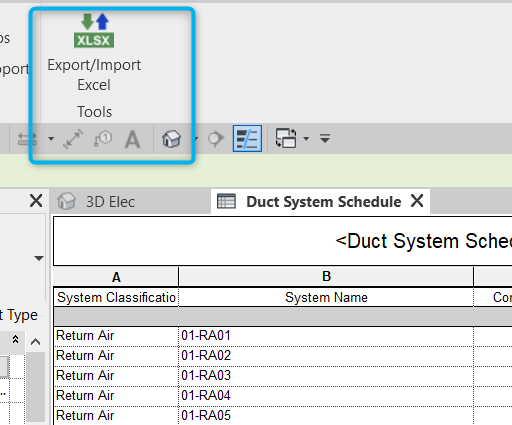Get This Report about Revit Excel Import
Table of ContentsRevit Excel Import for BeginnersRumored Buzz on Revit Excel ImportMore About Revit Excel Import7 Easy Facts About Revit Excel Import ShownGetting The Revit Excel Import To WorkWhat Does Revit Excel Import Mean?

When importing in one file, you can just import one line thing per deal. When importing and associating in two documents, each data represents a things. To determine which records must be connected across the files, include a typical column in both. Among your data must have an unique value for each and every row in this column.
For instance, a typical usage instance is to import as well as associate get in touches with and companies. In the adhering to sample files, Company Name is the common column: XLSX or CSV. XLSX or CSV. In the company data, there is an unique worth for every row in the Company name column. In each row of the get in touches with data, the worths in the Company name column match the firm that the call will be connected with.
The 9-Minute Rule for Revit Excel Import
in these example documents, Company name is the distinct key for the Firm things. XLSX or CSV. XLSX or CSV.: in these sample data, Deal name is the unique trick for the Offer object (revit excel import). When importing in two data, you can import multiple line products per deal.: XLSX or CSV. R has several functions that allow you to import information from other applications. The following table notes a few of the helpful text import features, what they do, and also examples of just how to utilize them. Function What It Does Instance () Reviews any type of tabular information where the columns are separated (for example by commas or tabs).
fwf Review a file with days in fixed-width style. In other words, each column in the information has a fixed number of personalities. read. fwf("myfile", sizes=c(1,2,3) Along with these choices to read text information, the package foreign allows you to read information from various other popular analytical formats, such as SPSS.
You can export information from a project to support and create archives of gathered information. When you export a job, its components are replicated as well as saved to a data that can be imported into other jobs or shared with other instances of Metasploit. From the Pro Console, you can export the following: - An XML file that contains the attributes for a lot of the things in a job as well as can be imported into one more project.
More About Revit Excel Import
- A CSV data that includes the materials for a particular table in the data source, such as the hosts table or qualifications table. CSV documents can be exported from the command line for reporting objectives, but can not be imported back into a project. The db_export command allows you to export the job to an XML documents - revit excel import.
Just credentials that have actually logins are exported in a PWDump. If a credential does not have an associated login, it is not included in the exported Visit Your URL file. To export a PWDump data, utilize the following syntax:1 msf-pro > db_export -f -a/ path/to/pwdump. txt, Where the -f choice defines the documents type and the -a choice specifies the documents course and also documents name.
After the outcomes are find imported, you have these commands to view and also take care of the imported information. Each command likewise has a collection of options that you can see with -h: credshostslootnotesservicesvulns, For instance, if you desire to see all the hosts that were imported, you can run the following:5 addresss mac name os_name os_flavor os_sp function info comments6======== === ==== ======= ========= ===== ======= ==== ========.
Some Known Facts About Revit Excel Import.
What do you do if you need to pack a considerable number of records or information at once into Legendary? This can be achieved by an "Import" (by utilizing an Import utility within Impressive). In an import, you as the importer must lay out information in a precise format to be filled right into a master documents (table) or group list (constants).
The import energy will do some basic mistake checking, past that, the import utility will develop or change whatever document or information within the record(s) your import defines. As you recognize, there is absolutely nothing even more gratifying, or alleviating, than when an import went in successfully; not only without errors, however without impacting something you weren't meaning to.

Unknown Facts About Revit Excel Import
Have a back-out import all set to put points back to the original state. As Legendary has many parts of master data and also classification list that are shared among others, an arranged technique is best.
Having individuals/representatives who recognize exactly how your adjustments will influence them is necessary not just for them but also for you as well. There have been numerous times where the importer's focus is directed to his/her very own objective and also might not understand some downstream consequences. Those whom you influence can inform you or you can comply and find a pleasing service.
The even more certain you are, the better chance you import will do specifically what is planned.
The smart Trick of Revit Excel Import That Nobody is Talking About
We have been making use of data sets already saved as R objects. An information scientist will hardly ever have such luck and will need to import data right into R from either a data, a data source, or other sources. Currently, among one of the most common methods of saving as well as sharing data for evaluation is through electronic spreadsheets.